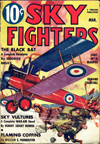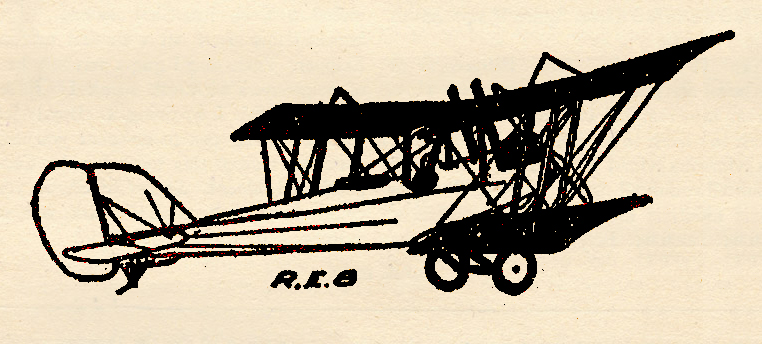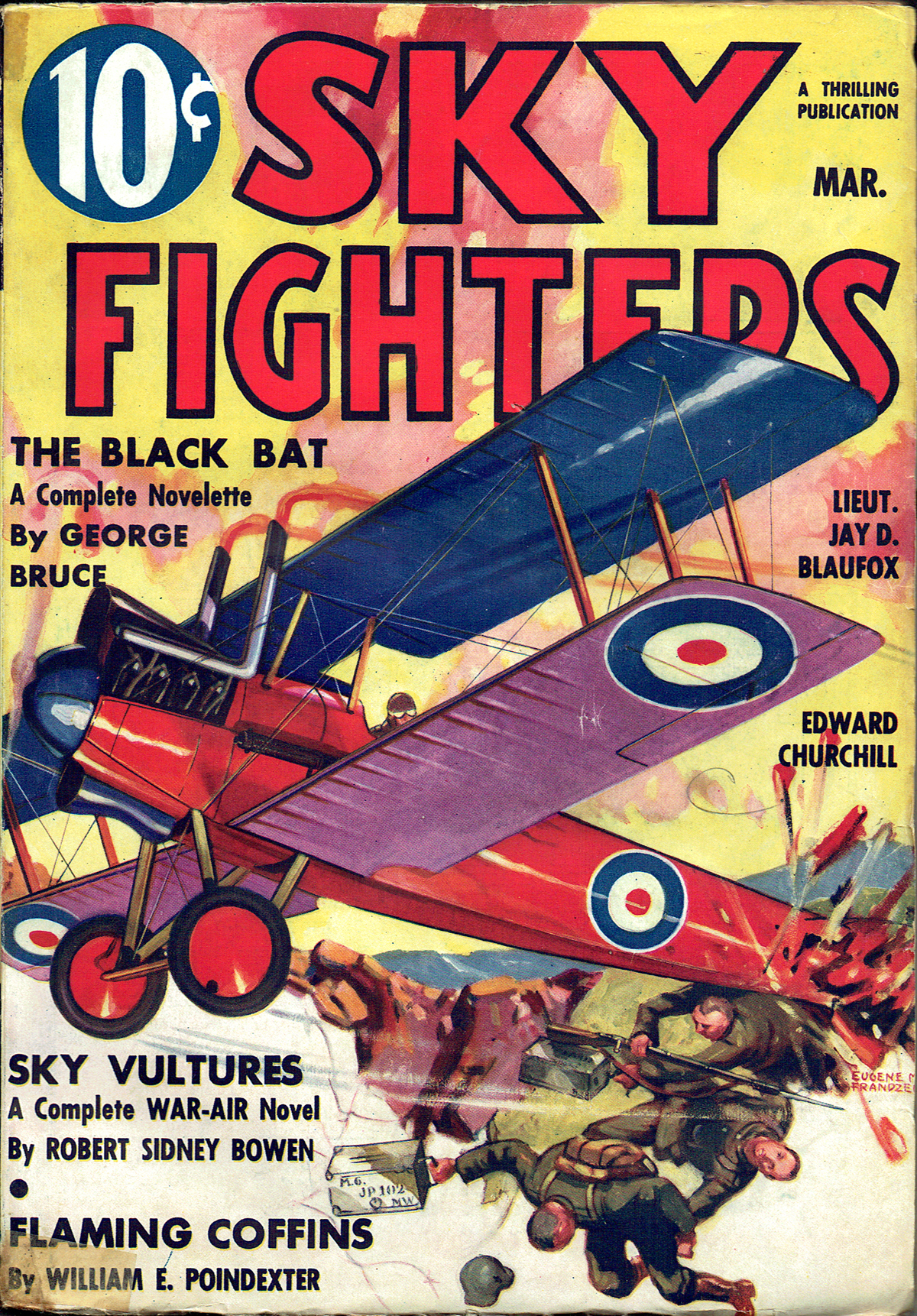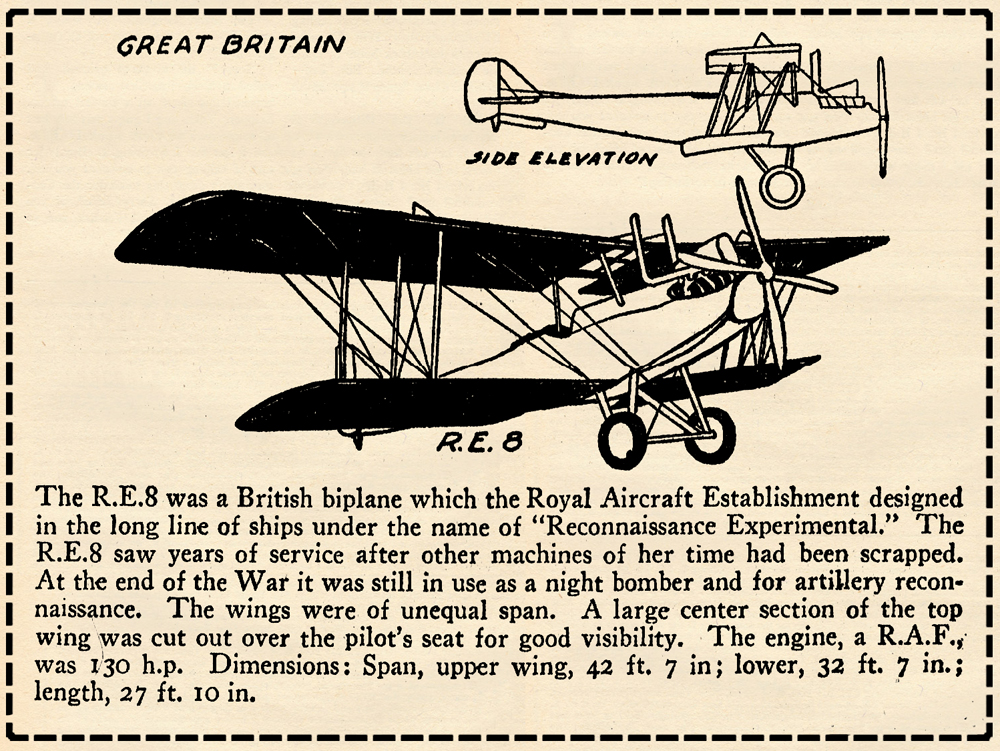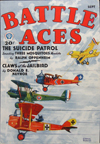“Sky Fighters, December 1936″ by Eugene M. Frandzen
Eugene M. Frandzen painted the covers of Sky Fighters from its first issue in 1932 until he moved on from the pulps in 1939. At this point in the run, the covers were about the planes featured on the cover more than the story depicted. On the December 1936 cover, It’s a R.E.8 and the Siemens Halske Scout!
The Ships on the Cover
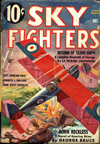 THE R.E.8 was used from the early war period until the armistice. The sturdy character of this plane was phenomenal.
THE R.E.8 was used from the early war period until the armistice. The sturdy character of this plane was phenomenal.
The Siemens-Halske scout was a German single-seater whose bulky, fat outline was easily recognized. The curved fin only added to its stubby appearance. A Halske rotary engine of 200 h.p. spun the four-bladed prop.

Back in the old days when feudal wars and invading hordes from the north and northeast had Europe in a constant state of unrest, Paris was laid out. It was not just spotted because of the natural beauty of the surrounding rolling hills and the winding rivers. That city was planned to resist invaders. The ridges of hills and the winding rivers were natural barriers past which the foe must batter if he was to advance. The hills backed a series of concentric valleys spreading out and out like ripples in a pond. Those natural fortifications served well in the old days. Also, they were of help to the French in the World War.
“They Shall Not Pass!â€
“They shall not pass!” was the hoarse cry of the French soldier as he threw himself at the mighty armies of the Kaiser. His battle cry was sincere. He fought wildly, clinging tenaciously to each inch of French soil. But relentlessly he was pushed back. “Replacements,” was the French cry. “More men, more cannons, more ammunition!”
The French were exhausted, their backs to the wall. And then replacements began to arrive. Swarms of Paris taxis and lorries poured out their precious loads and the line held. Back and forth swayed the front line always holding at one of the natural barriers, at a deep river, tiny rivulet or a rugged line of hills.
The war went on for months, years. The German command who had already renamed the streets of Paris on their own maps, who carried medals ready to emblazon the puffed bosoms of the troops in commemoration of the fall of Paris, were furious at the delay. They had underestimated the type of terrain they must conquer. The worst type of hazards were the rivers. Cannons and ammunition were shunted off on sidings. Trainload after trainload of special pontoon boats rattled over the captured French railroads. German shock troops staggered under the boats as they dumped them at the river’s edge. Engineers working methodically slid the boats into the water. Cables and ropes held them fast to the near shore. Planks were slapped down across the boats, foot soldiers swarmed forward. The defenders’ guns were red hot, Germans fell in piles, but others clambered over, advanced.

“They must not pass!” the grim defenders roared into the German’s teeth. But they were passing. Their sacrifice had been terrible. Their dead filled the river, reddened the blue water. Again the French held the advancing horde. Their battle cry was weaker, it became a groan, for they knew it was a matter of minutes before the Germans would swarm up the near slope of the river’s bank and enfilade them with withering fire. And then above the fierce roar of battle a faint droning sound was heard in the sky. It grew louder, shrieked down from above. A great shadow flashed across the far bank, over the bridge. Terrific geysers of water shot up. The first British R.E.8’s bombs had missed! Another shadow; a splintering upheaval of planks, boats and riddled bodies. The second R.E.8 had made a direct hit, smashing into atoms the last link of the German chain of advance.
A roar of thanks burst from the parched throats of the defenders. It was lost in the snarl of motors as the lumbering R.E.8s turned on a Siemens-Halske rushing in to attack them. The single seater staggered. Its nose fell off, it plunged down, a crumpled thing, into the floating debris and limp bodies of the German soldiers who would never flaunt medals on their tunics commemorating the capture of Paris.

Sky Fighters, December 1936 by Eugene M. Frandzen
(The Ships on The Cover Page)





